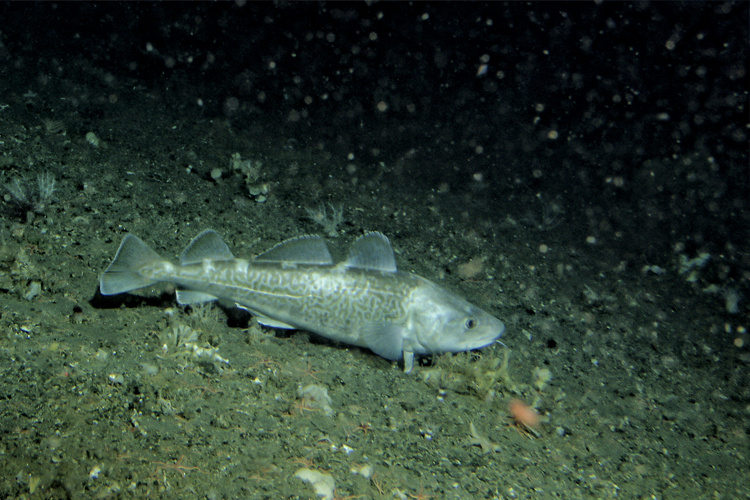Alaska oysters continued their strong growth trajectory, as the state’s Mariculture Task Force projects that growing shellfish and seaweed will build a $100 million industry in 20 years.
But warmer waters mean more tough times ahead for Pacific cod.
WINNERS
Pollock: The Bering Sea trawl fleet fished on a TAC of 1.397 million pounds, while the Gulf of Alaska TAC had been set at 141,227 metric tons for 2019. As for the abundance of pollock stocks in the Gulf of Alaska, scientific teams proposed a cut that would take the TAC down to around 112,000 metric tons in the Gulf of Alaska for 2020 while the Bering Sea stocks are expected to decline slightly and could wind up with a 2020 TAC of 1.26 million metric tons.
Oysters: Alaska’s oyster industry continues to increase production. As of last summer, the state received applications for what may become an operation of 127 acres on Prince of Wales Island. In Sitka, Silver Bay Seafoods began the application process for a tract of 182 acres. The increase in oyster ventures aligns with the state’s Mariculture Task Force, which anticipates Alaska’s oyster and seaweed growing industry is on track to become a $100 million industry in the next 20 years.
Salmon: The salmon harvest for all five species hit 199.98 million fish for the 8th largest in Alaska’s history. Bristol Bay’s Nushagak District accounted for 27 percent of the total statewide harvest of 55.28 million sockeye. The pink salmon season harvest fell short of the projected 137.70 million and came in at 90 percent with landings of 124.30 million.
Clams and scallops: Alaska’s fleet of two scallopers opened their season on July 1 to lower statewide guideline harvest levels than in 2018. The grand total for all areas in 2019-20 GHL totals up to 267,500 pounds of shucked meat, up slightly from the 265,000 pounds of 2018. Cook Inlet commercial razor clam diggers went after a quota of around 350,000 pounds. A dozen divers received 66 cents per pound in 2019, which has not changed in the last three years. Production has declined since 2016, and the harvest fell to 177,147 pounds for revenues of $116,917 in the 2017 season. More recent data with the Alaska Department of Fish & Game for 2018 put the harvest pounds up slightly from 2017 at 199,162 pounds for revenues of $131,447.
LOSERS
Herring: Sitka’s herring season came and went without so much as a commercial landing in 2019. Meanwhile, the 2019 quota for Togiak had been set at 26,930 short tons. The problem with the Sitka fishery is that the egg skeins coming from the small fish are too small for markets in Japan, while Togiak suffers the opposite plight with young fish that are too large for market recruiting into the fishery.
Pacific Cod: Fishermen faced a dismal TAC of just 12,368 metric tons in the Gulf of Alaska when the season opened on Jan. 1. That’s down from the 13,096 metric tons of 2018 but pales in comparison to the reduction from the 2017 TAC of 64,442 metric tons. The TAC for the Bering Sea, meanwhile, has been set at 159,120 metric tons, which is down from the 188,136 metric tons of 2018. The prevalent theory behind the cod crashes ties low recruitment to warmer sea temperatures.
King crab: Bering Sea crabbers went after just 3.8 million pounds of Bristol Bay red king crab in 2019. Based on abundance estimates, the population appears to be declining at around 12 percent a year since 2013. What’s worse, ex-vessel prices have not climbed anywhere near commensurate with the shortage of volumes, and cheaper Russian king crab has been filling in gaps in the market.
Halibut: The 2019 halibut season got underway on March 15, with a quota of 18.9 million pounds. The quota was raised from the 2018 total of 16.63 million pounds, as improved methodology in surveys cut down on errors, and the number of spawning females has improved slightly since 2011. Ex-vessel prices ran lower in 2019, with processors offering $5.25 per pound for fish in the 20-pound range, $5.50 per pound for 20-40-pound fish and topped out at $5.75 for 40 ups.
ONES TO WATCH
Geoducks and sea cucumber: Southeast Alaska geoduck and sea cucumber divers kicked off their seasons in October with a 637,900-pound GHL for geoducks and a 1.9-million-pound GHL for cukes. As for ex-vessel prices divers have been averaging around $6 per pound for geoducks and around $5 per pound for the sea cucumbers.
Blackcod: The blackcod fleet fished on a quota of 25.97 million pounds for the 2019 season, which is up slightly from the 25.80 million-pound quota of 2018. Strong representations of 2- and 3-pound fish entering the fishery bode for quota increases by up to 25 percent for 2020. Surplus volumes of small fish entering Japanese markets continues to dampen prices. Two-pound fish ran at $1.60 per pound while 7-ups garnered up to $7.50 from processors. Prices for the various weight categories were down by about a dollar across the board from previous years.
Groundfish: The Gulf of Alaska groundfish fishery rationalization program put on hold indefinitely, trawlers continue to target arrowtooth, cod, and rockfish TACs under the bycatch caps established for halibut and salmon. The cap for the incidental take of king salmon in recent years has been set at 2,700 fish, and more recently a “performance buffer” rewards lower salmon bycatch in the previous year by addjng an extra 360 fish in the following year. Low catches in 2018 warranted adding extra salmon in 2019, and the fleet began the season with a cap of 3,060 kings.







